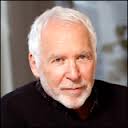Safety within Reach
Peter Block: April 2024
“The impossible is the least that one can demand.”
–James Baldwin
There are few issues in the news more compelling than public safety. We might think that with the attention and funding available, things would be getting better. Much of the attention is about the performance of institutional players: news media, the mayor, the police officers and their training, the police union, the criminal justice system, the prison system, protest movements, the news industry, the academy, private prisons, the home security industry. All promise reform.
Most of our thinking operates under the business perspective that to make things better we need to invests in more problem solving, more studies, immediate results, more scale of enforcement, and more “strong” leadership. This lives under the scarcity context that embraces the language of ending violence, more severe consequences, and continuing to focus on what is wrong with vulnerable people who lack schooling, a good family, and strong role models.
This column introduces an alternative context and set of actions.
Mike Butler, Police Chief in Longmont, Colorado, for 24 years, operates within a different, non-traditional context concerning safety and violence: “Over the decades, we have been led to believe that our sense of safety is a consequence of external factors. As if something outside of me, my family, my neighborhood is mostly responsible for how I feel about my sense of safety.”
More comments from Mike reflect the current perspective:
The experts (including police) encourage us to think that more or different expertise is needed; more armed guards are needed; different leaders are needed; more laws are needed; more criminal justice system capacity is needed; more home and business alarm systems are needed; more wariness of our neighbors or strangers is needed; more personal chemical mace is needed; and we need to be on constant hyper-personal alert about our own safety. There is even a growing industry to teach people martial arts to protect themselves from the monsters that are everywhere.
Participate in any community conversation about safety and we will hear about loitering youth, the latest headlines in the papers or breaking news on our TVs, the latest mass shooting that occurred four states away, the unsheltered, the brutality of police or not enough police, and the scary incident told to us second, third, or fourth hand by a passerby.
Mike says that the definition of the nature of justice has remained virtually unchanged in our country: “The idea of justice is still attached to the primitive thinking of ‘an eye for an eye’ and exacting ‘a pound of flesh.’ There is little conversation about a more enlightened perspective of justice –– for instance, that which can be found in restorative principles and practices. Fear and retribution are the current primary emotional precipitators to the development of policy and practice.”
During 24 years with Mike as chief, Longmont produced some dramatic results in the most measurable aspects of safety: Dramatic reduction in offenders going into the criminal justice system. Dramatic increase in the number of citizens who directly participated in reducing criminal offenses. Dramatic shift in the treatment and support of street people and residents of marginalized neighborhoods. Dramatic increase in citizens of Longmont reporting that they live in a safe community.
Shift the Context
Better law enforcement and trying harder at fighting violence with more institutional and legislative force is not working. There was no war to end all wars. No war on drugs or poverty has been successful. Our well-being is not improved by the conversations we are now having about ending violence. Focusing on violence strangely serves to sustain it.
The choice is to create an alternative context. This new context is to shift the conversation from ending violence to building social capital. This means that our safety is created by our connection with our neighbors. Safety occurs as an outcome of relational well-being. It is a by-product of our trust in our neighbors, our time spent with neighbors making this place better. The time we spend with our eyes on the street where we live.
What if we decided to initiate a community conversation about reducing violence where what citizens do becomes a large part of the answer? What if we shifted our attention from fixing problems to creating social capital? What if we explored the functions and authority that we see taken on by citizens in healthy communities and treated that as one way to work with public officials and neighborhoods to write a different story about where we are?
What these different conversations require is a shift in who we consider to be the major players. If we are paying attention to violence and problems and professional solutions, they all become stronger. When we devote our attention to the police and those in charge, we make them central.
The common good is best served when we turn our attention in other directions. When we focus on the capacities and strengths among citizens rather than turning to professionals and institutions. If we want better outcomes, we begin by realizing that one choice that is completely ours is where we place our attention.
This is what Mike did in Longmont. He shifted his department’s philosophy, policies, and practices “to embrace the activation of the common good.” As Mike tells it:
I believed the reality and the perception of safety was mostly the responsibility of citizens, both individually and collectively. The public safety department would identify neighborhood connectors, citizen activists, cultural brokers, heads of non-profits, along with others who wanted to be involved and bring them together to talk about what role they could play in surfacing, activating, and coordinating the social capital in their neighborhoods.
We wanted people to believe the community of Longmont was fundamentally a place where the common good prevailed and could be activated and leveraged so that it worked for each and every person. While the police were charged with responding to criminal activity, I placed a premium on our staff not becoming moral skeptics, on the belief that they should always view people not as deficit to the community and but full of potential.
It was within the above framework that we were able to create an environment in which those who wanted to help others could –– we helped “activate the activators.”
Mike believed it was his department’s responsibility to ensure that people, no matter what their status in the community, felt and believed they belonged to their community. “We would often say,” he recalled, “that it was the role of police officers to help people to feel at home in their community, and indeed the world, including especially those who were unsheltered, or struggling with their mental health and/or addiction.”
Will the people of our discomfort go away if we take a different path like Longmont’s? No.
People on the streets and in the parks have been with us from day one. There will always be drug activity too close to home. Mental illness exists in every neighborhood and in most families. We need institutions to care for extreme situations. The people we call homeless, mentally ill, addicted will stay around us.
What Mike decided was to change how we relate to one another in the face of these challenges. The costs of these realities go down when the context shifts from criminalizing isolated and off-center citizens to engaging and activating them. This is the essence of producing a culture of more trust, less isolation, and more accountability for citizens managing their own well-being. The suffering in the world, the presence of uneasiness, will continue to be there. What Mike offers is a path he and the people of Longmont have proven: a way to engage each of us in joining together to make a place better. It is that act of joining which reduces the perceived threat of violence and connects us with people nearby that works.
When we decide to increase our sense of safety, it begins with shifting our thinking. To spend a moment in understanding what social innovators like Mike are demonstrating, even though they are of no interest to the evening news and social media stories. If there comes a moment when we stop marketing fear, safety within reach can emerge. As it did in Longmont.
This column is part of the Witness the Common Good Series. If you are interested in monthly content curated and authored by Peter Block, subscribe here. For learning how to bring the common good protocols into being within your work and community, visit www.designedlearning.com.





